Lost in the woods

Lost in the woods

Lost in Devon



Warrington Bank Quay, April 2025


London in Feb

Saturday, March 29, 2025
London & Glasgow












Thursday, January 30, 2025
Darkness / Frost / Bingeing Severance

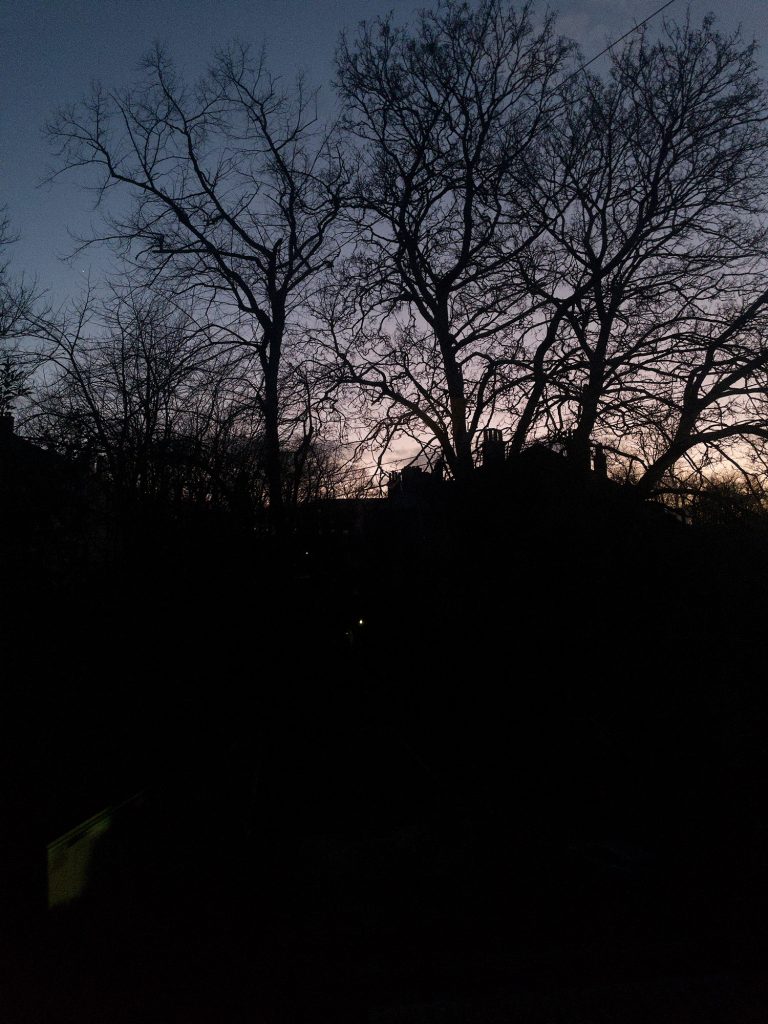
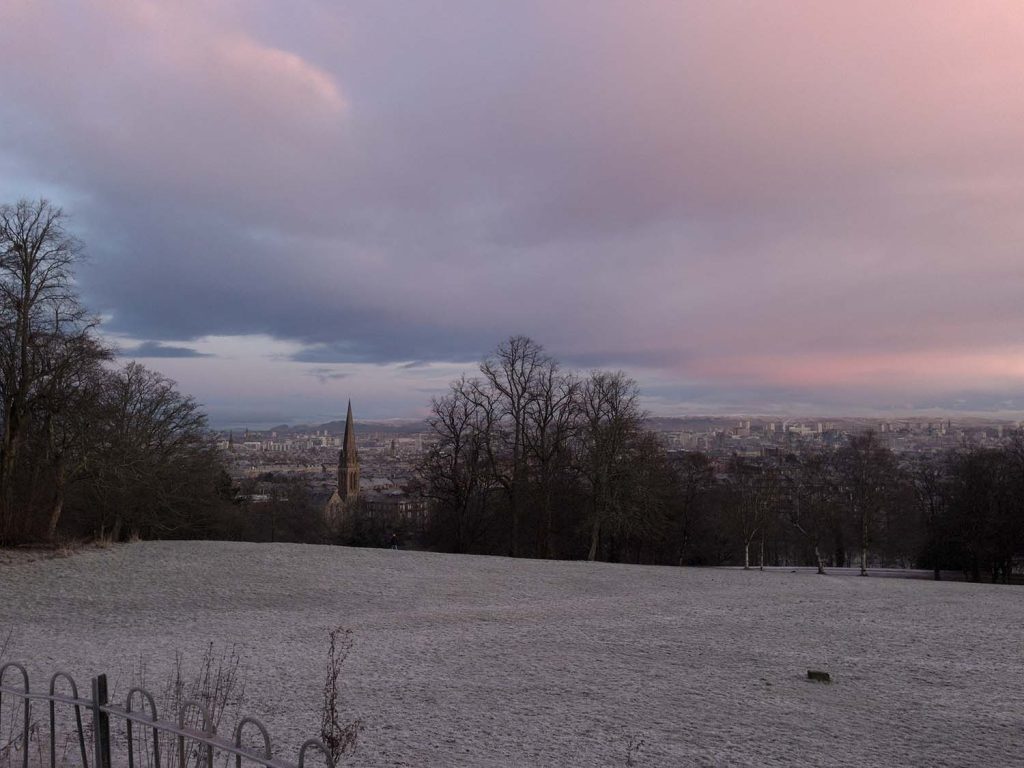
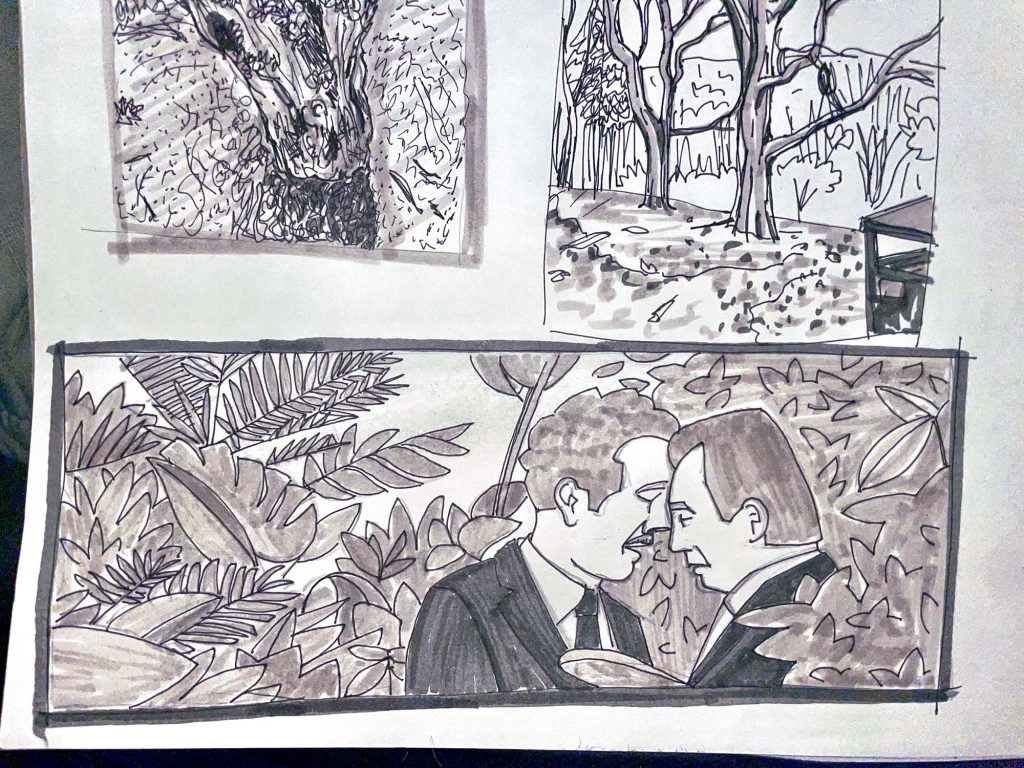
Sunday, January 12, 2025
Glasgow and the Campsies
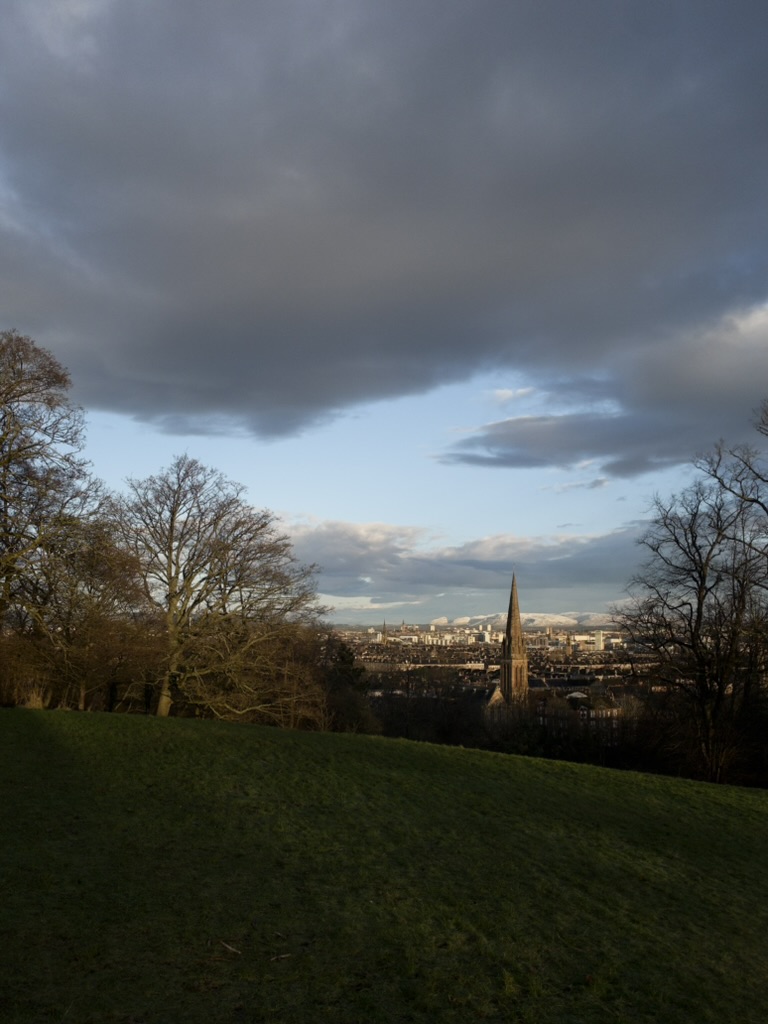

Saturday, December 28, 2024
Hello darkness my old friend







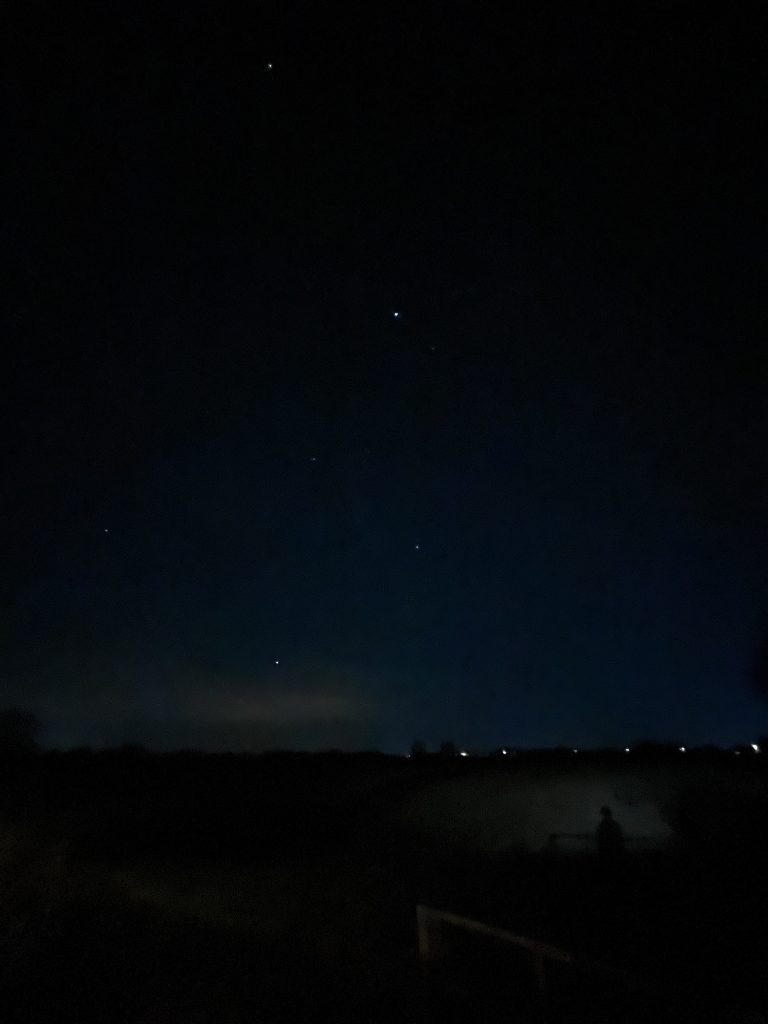
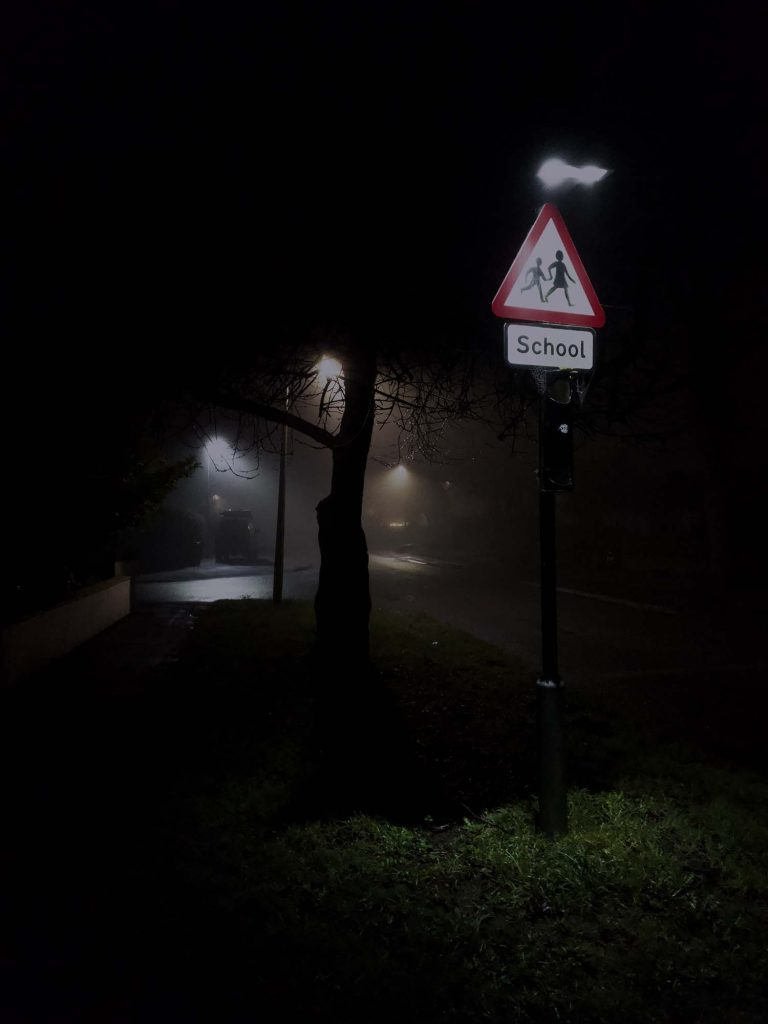
Friday, November 29, 2024
Featuring Empress Of at King Tut’s










Sunday, November 24, 2024
If you work in the advertising/creative industry, especially in the UK, you’ve probably heard of Rory Sutherland. He’s earned a reputation as something of a creative guru. A professional Quirky Brit who comes up with lateral ideas and pithy statements. Perhaps the David Ogilvy of his generation. Which is appropriate given that he’s Vice Chairman of Ogilvy UK.
Sutherland was recently on the Cleaning Up podcast to clarify his position on promoting fossil fuels (something his agency has no qualms doing).
As pointed out in this thoughtful post by my colleague and fellow Serious Person Jamie Inman, Sutherland is unable to give a straight answer, resorting mostly to deflection and lamentations of ‘virtue signalling,’ before melting into the form of a pop-psychology Jeremy Clarkson and casting doubt on the general veracity of climate science as a whole.
It’s an infuriating listen if you spend a lot of time thinking and talking about climate change, but to many it probably sounds reasonable. After all, can we really be sure of anything these days? Isn’t everything unpredictable? Why spend all this effort trying to change things, if change itself could be harder than what we’re trying avoid?
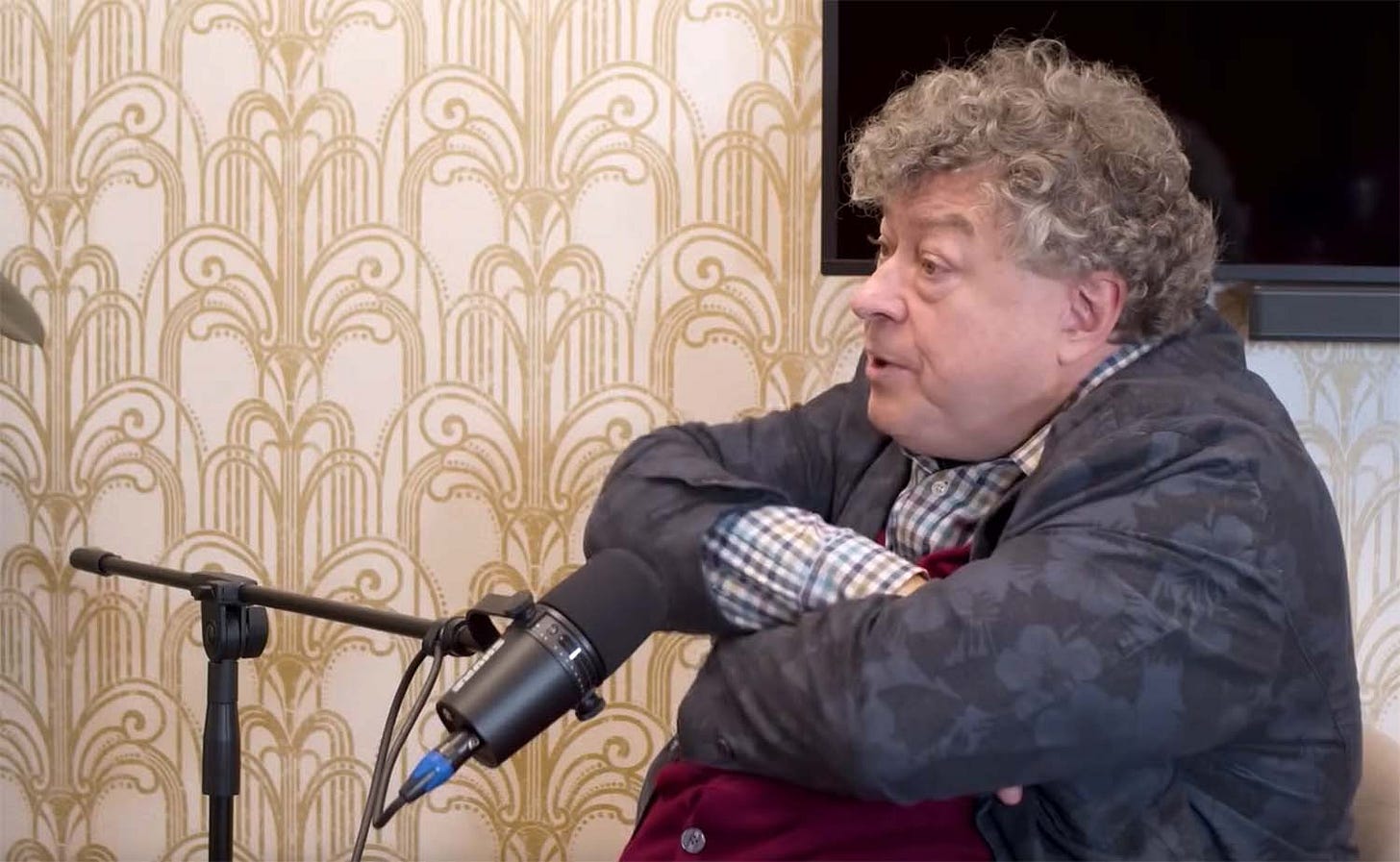
In Sutherland’s view, the people calling for radical change are dogmatic: we’ve been taken in by the climate cult and can no longer see the nuance, the uncertainty. In short, we’re naive, unserious, and not worth listening to. He asserts, dogmatically.
I understand dogma to be something that is repeated and reinforced in spite of the piling evidence to the contrary.
To call for ‘balanced debate’ when the science has long been established, to insist on working with polluters as ‘part of the solution’, to write off every extreme weather event as an outlier, and to throw doubt on established fact. This is dogma veiled as pragmatism.
You could even call it wishful thinking.
“Sutherland accuses others of dogmatic thinking while grasping tightly to his own dogma of uncertainty that gives him comfort in the face of reality.”
Underneath all the can-we-really-be-sures and the ‘balanced debates’ lies a deep-seated fear, and a wish to be told that everything’s going to be ok. Sutherland accuses others of dogmatic thinking while grasping tightly to his own dogma of uncertainty that gives him comfort in the face of reality. And that’s why his arguments resonate. They give people tools to self-soothe, to placate their own fears, and to find their own comfort in the idea of nuance, of uncertainty, of ‘both sides’.
Sutherland lives in uncertainty because that’s how the status-quo maintains itself. Instead of looking towards visionary, systemic change, the status-quo leans on behavioural science and the idea that small tweaks to ‘consumer behaviour’ can have wide-reaching impacts. That improving the wifi on trains is preferable to creating an actually functioning rail network. That consumer choice equates to social freedom and equality.
Perhaps it shouldn’t be surprising that a man who’s dedicated his career to finding new and innovative ways to sell more products is not really a ‘systems change’ kind of guy. But it’s still disappointing to realise that someone who is held up as a genius in the field of creativity turns out to be bought and paid for by fossil fuels. As Chomsky would put it, he may not be paid to say these things, but he’s certainly paid because he believes them.
Far from the incisive, innovative thinker he’s widely praised to be—and I had always assumed he was—Sutherland here is the embodiment of the status-quo staunchly digging its heels in and refusing progress, as it always does.
We have to go beyond clever behavioural tricks and offer something bigger. Something coherent, tangible. The solutions are there, from renewable energy to circular production to devolution and degrowth. These ideas are up against huge vested interests, and they need creativity. Creative agencies have a duty to put their vast talents towards making sustainable lifestyles more understandable, engaging and desirable, before it’s too late to adopt them.
We have to realise that the future cannot be found in nudges, in nifty tweaks, or in Ogilvy’s behavioural science department (as paid for by fossil fuel contracts).
The future is, by definition, not the status quo. The agencies that transition from the clients of past—and start promoting the solutions of the future—are those that will enable the creative sector to survive and thrive.
Sunday, November 3, 2024
It’s been very wet and very mild here lately. Which is great for the mushrooms! I do not know what these are but they’re pretty. I did not consume.
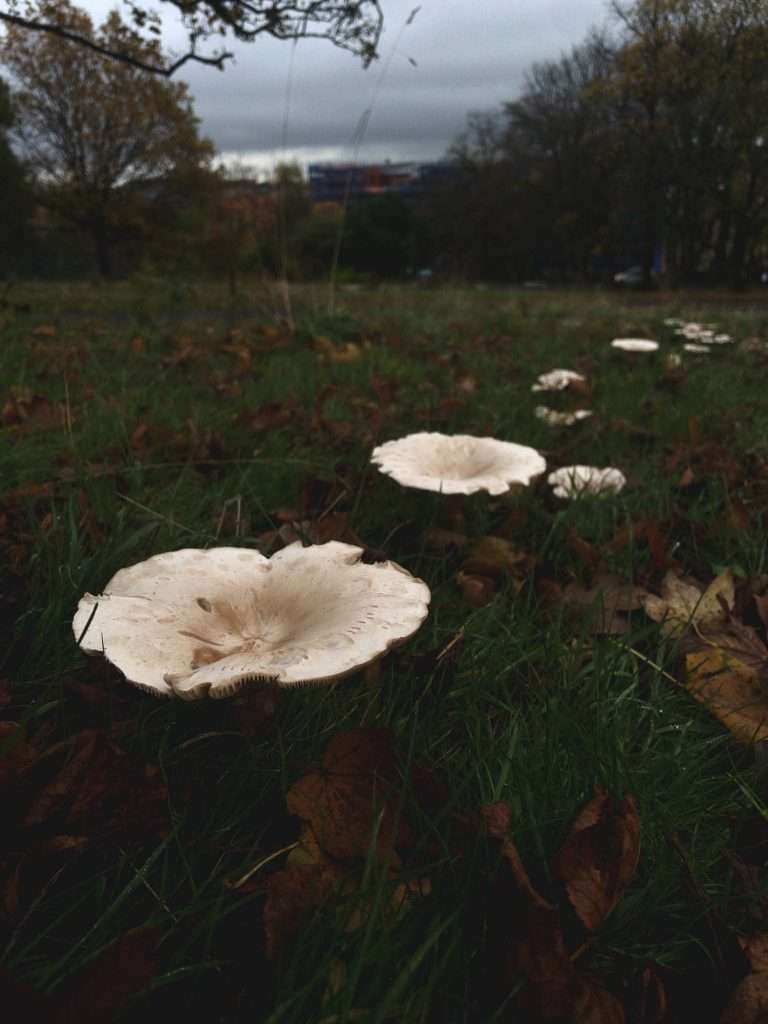
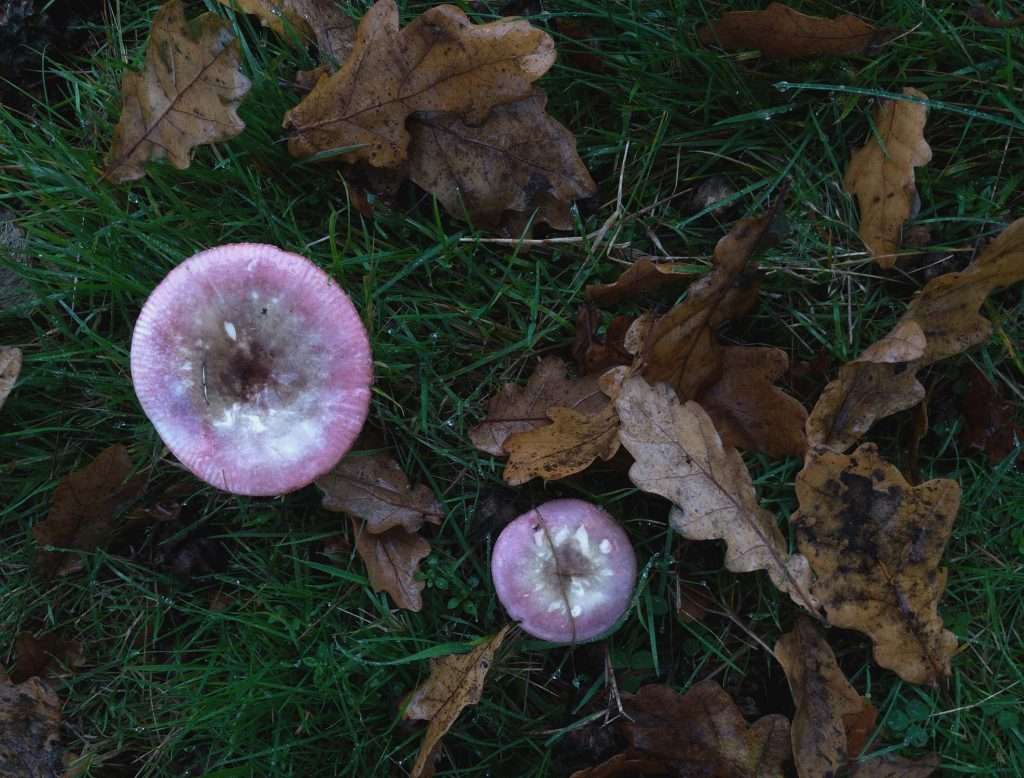
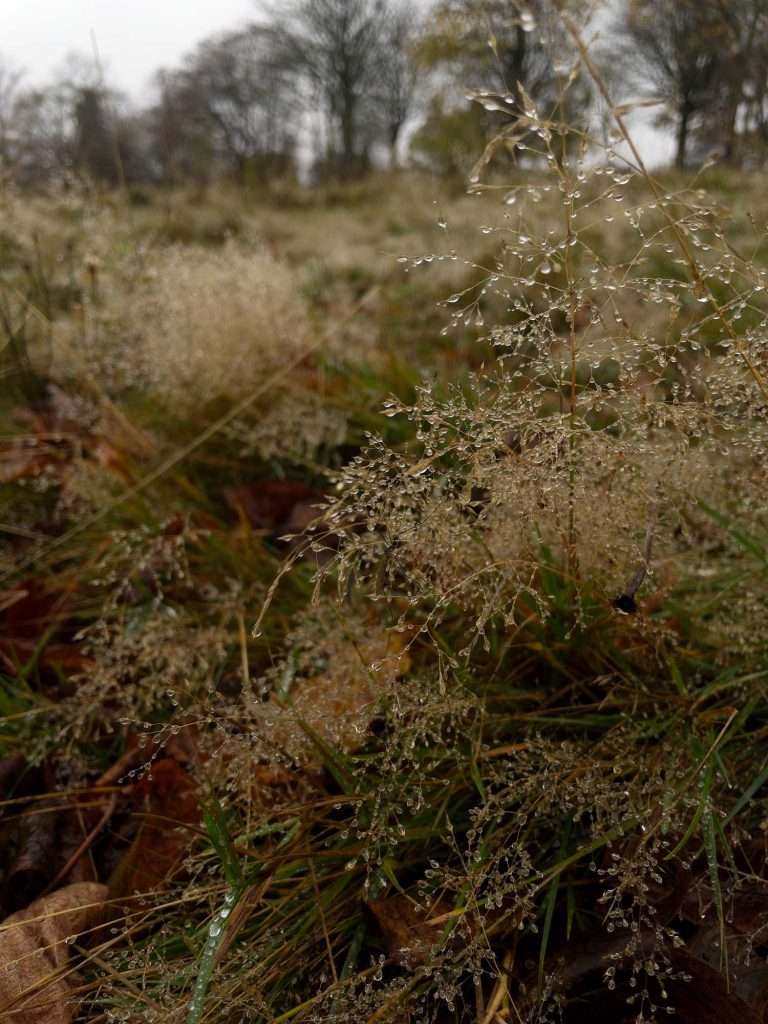

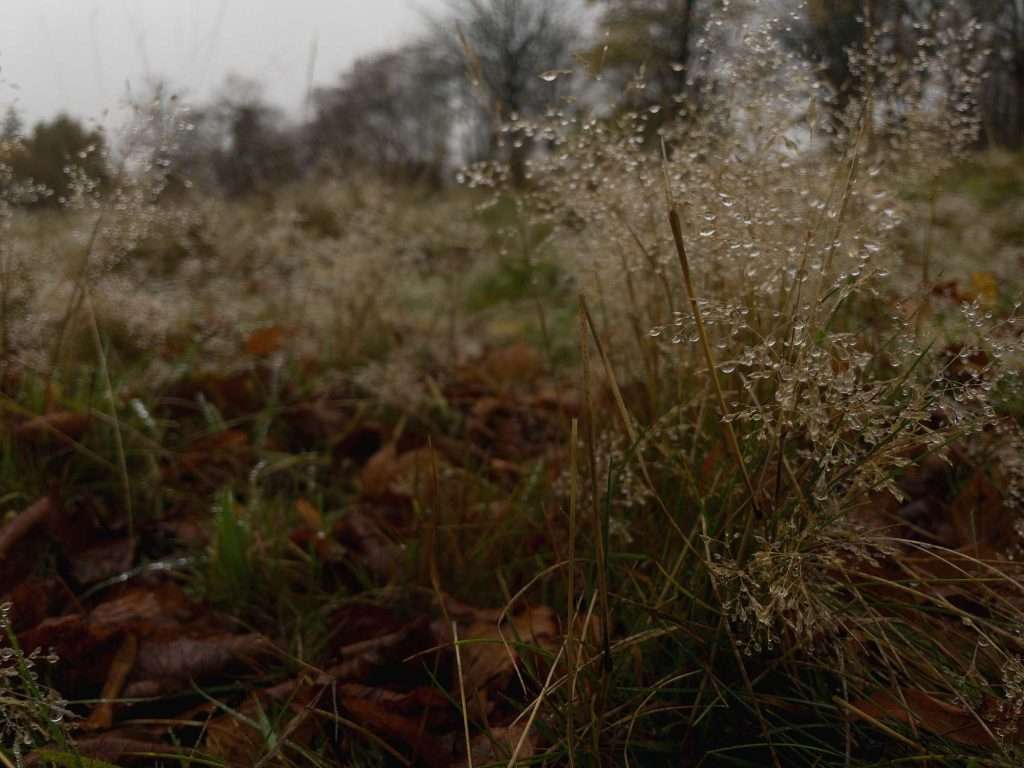
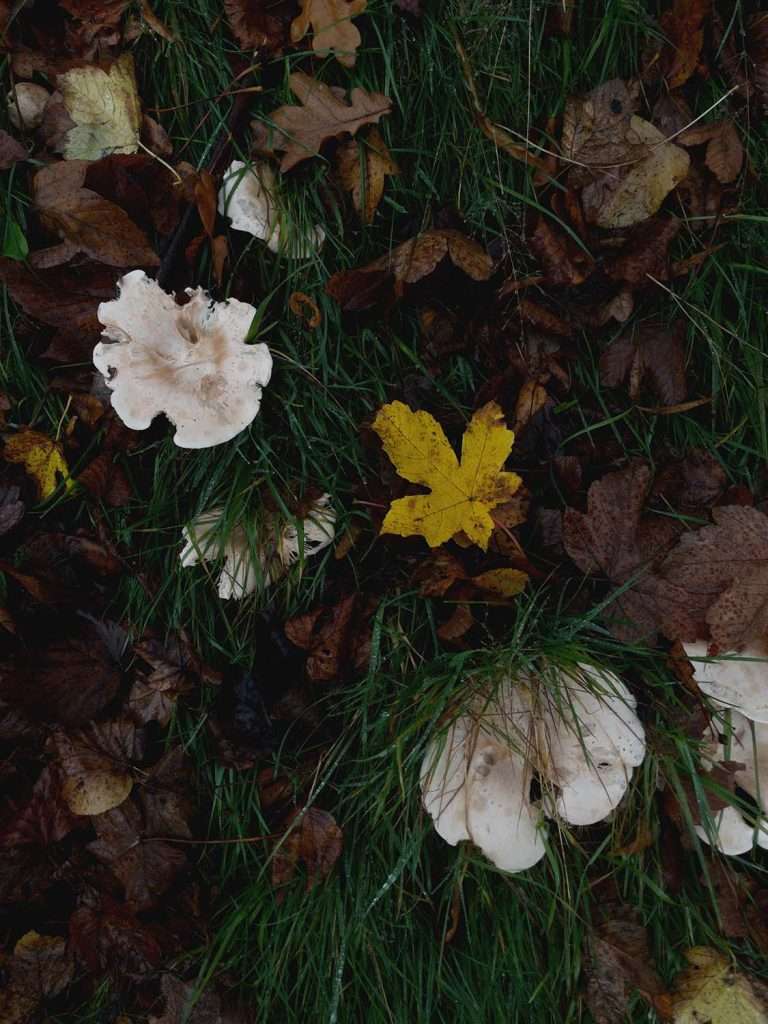
Thursday, October 31, 2024

Marvelling at the sketchbooks of John Hendrix

The point of A.I. is to talk to a cool computer
Max Read on the main reason people are buzzed about AI: it’s fun to talk to a computer.

Season: A letter to the future
Curious about this game, but wonder if I can handle it. Good to see games tackling the emotional weight of the climate crisis head on.

The urgent task of making sense
Brett Davidson on the crisis of meaning
Saturday, October 26, 2024

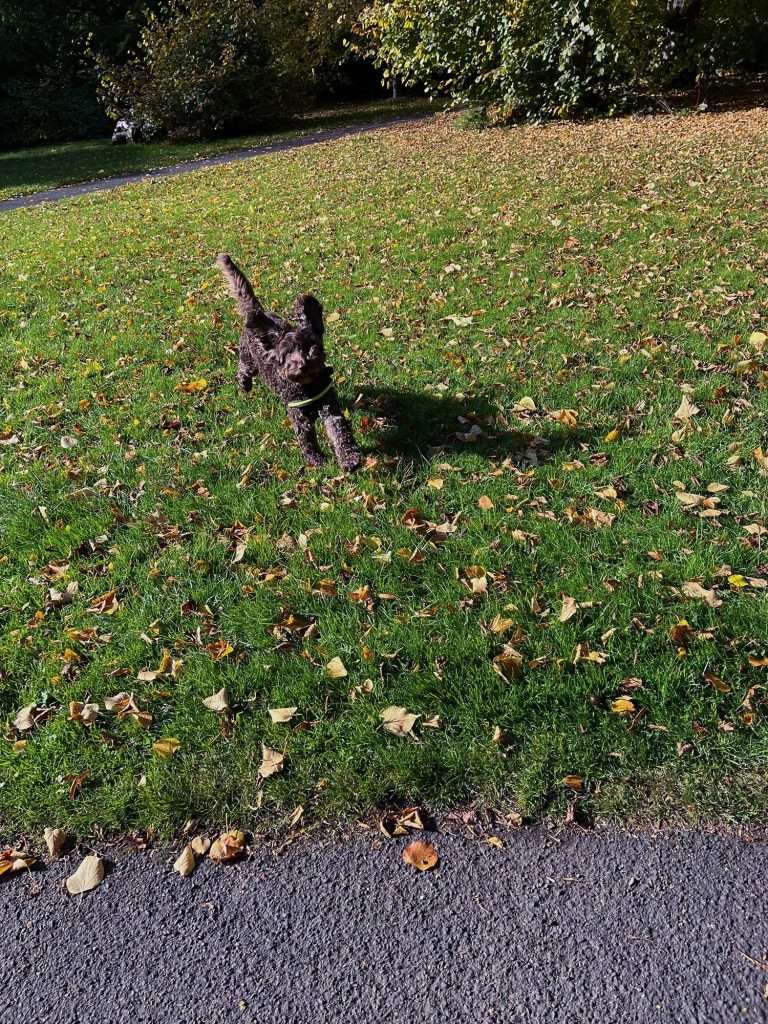
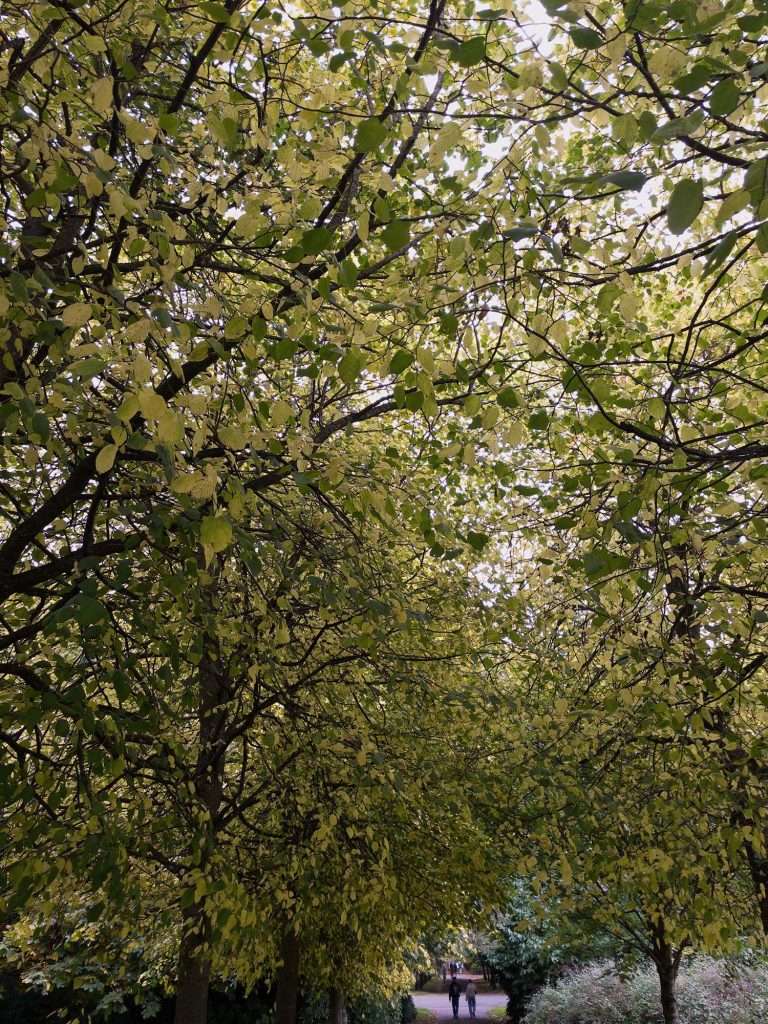
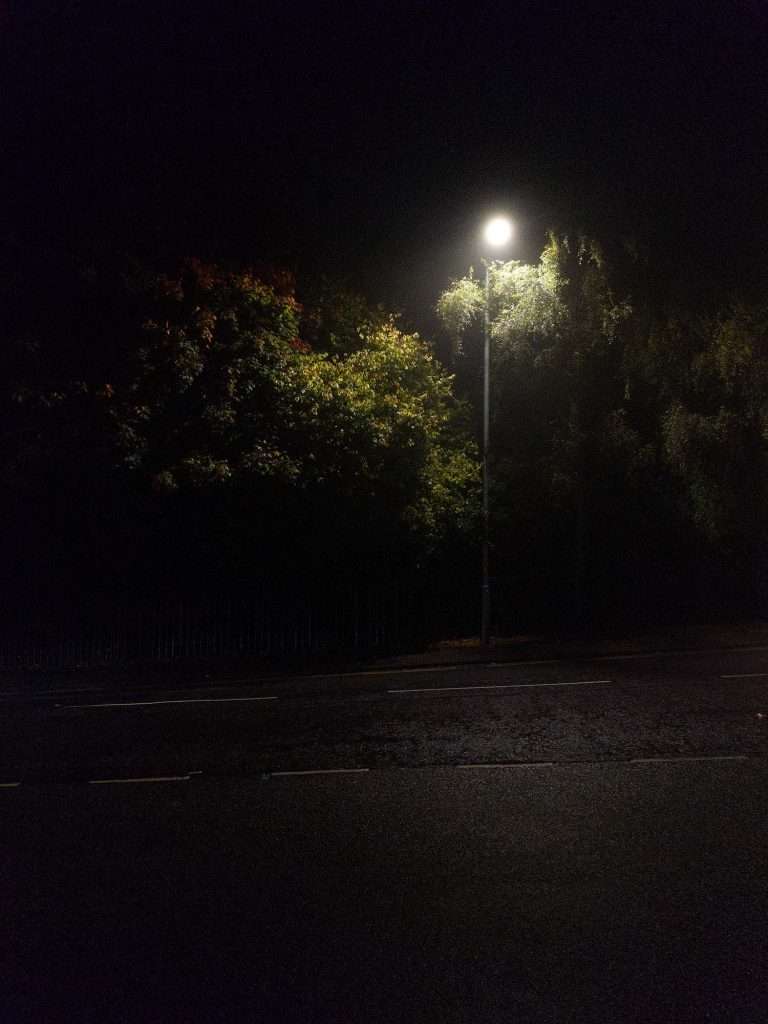
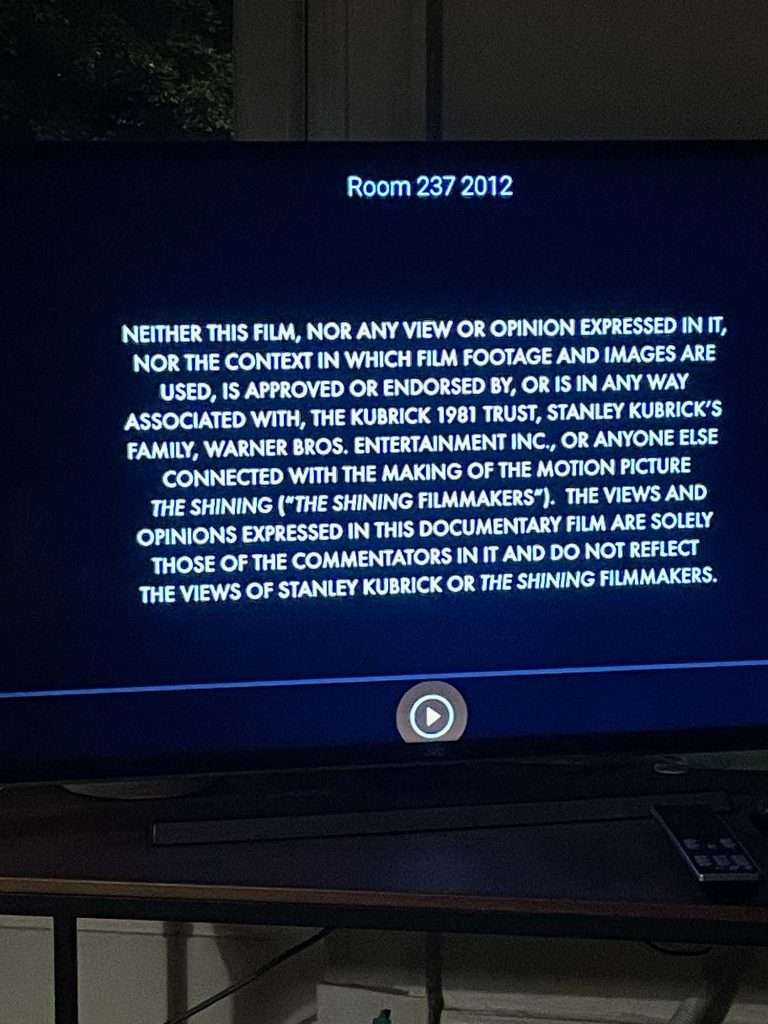

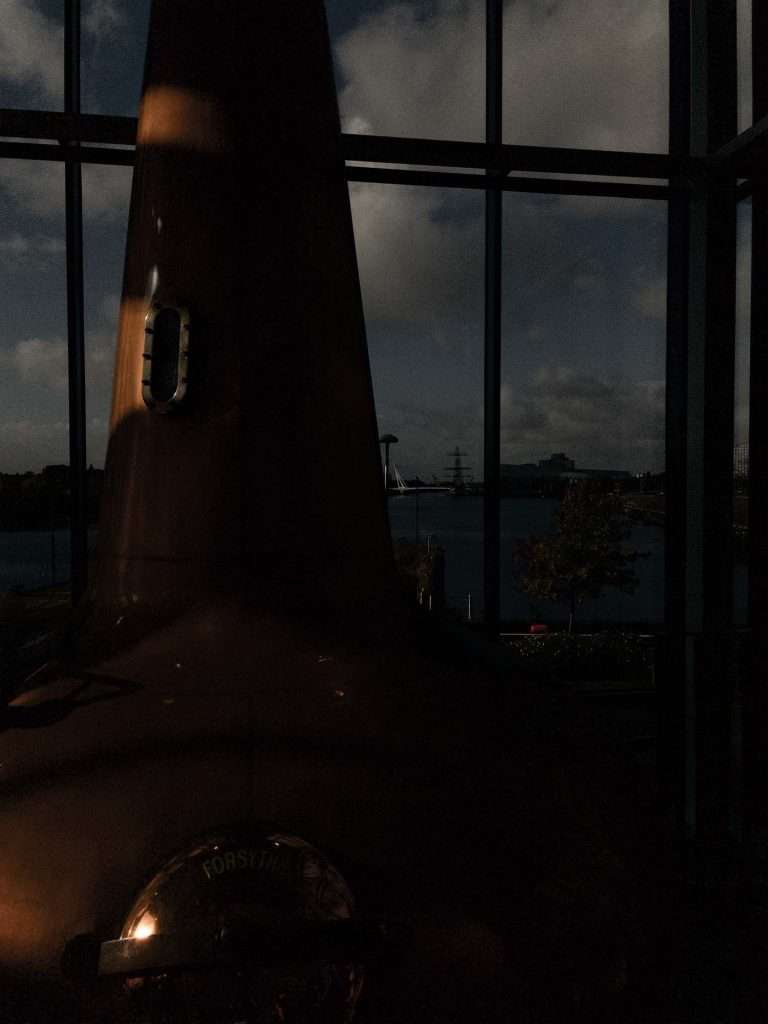
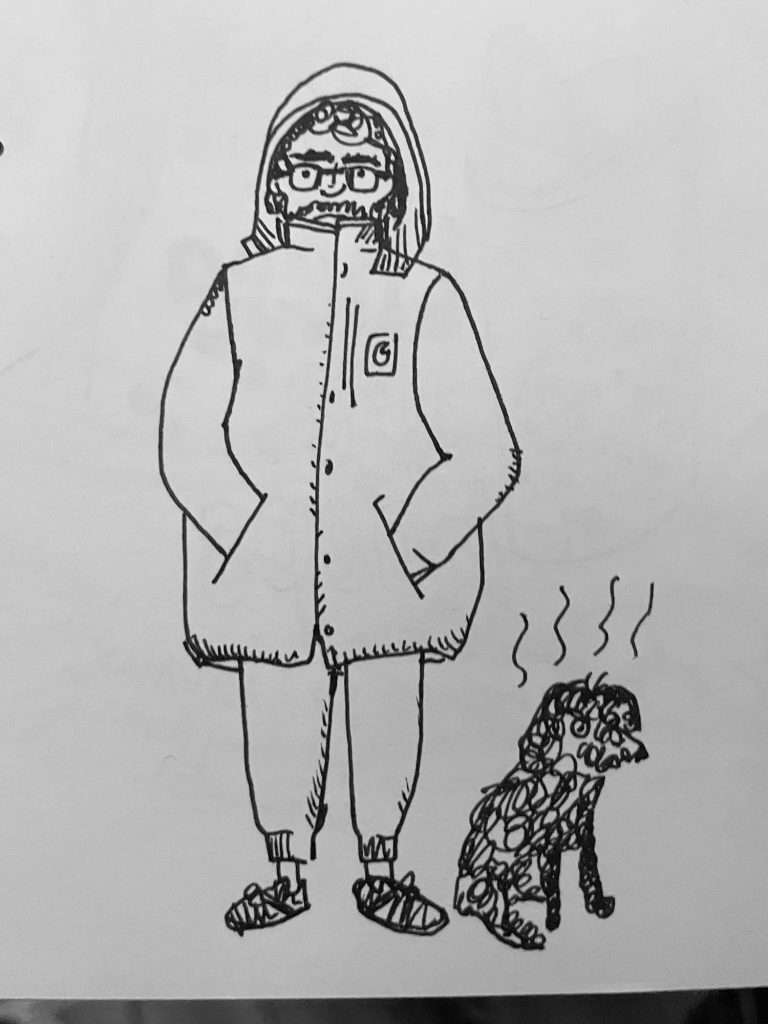
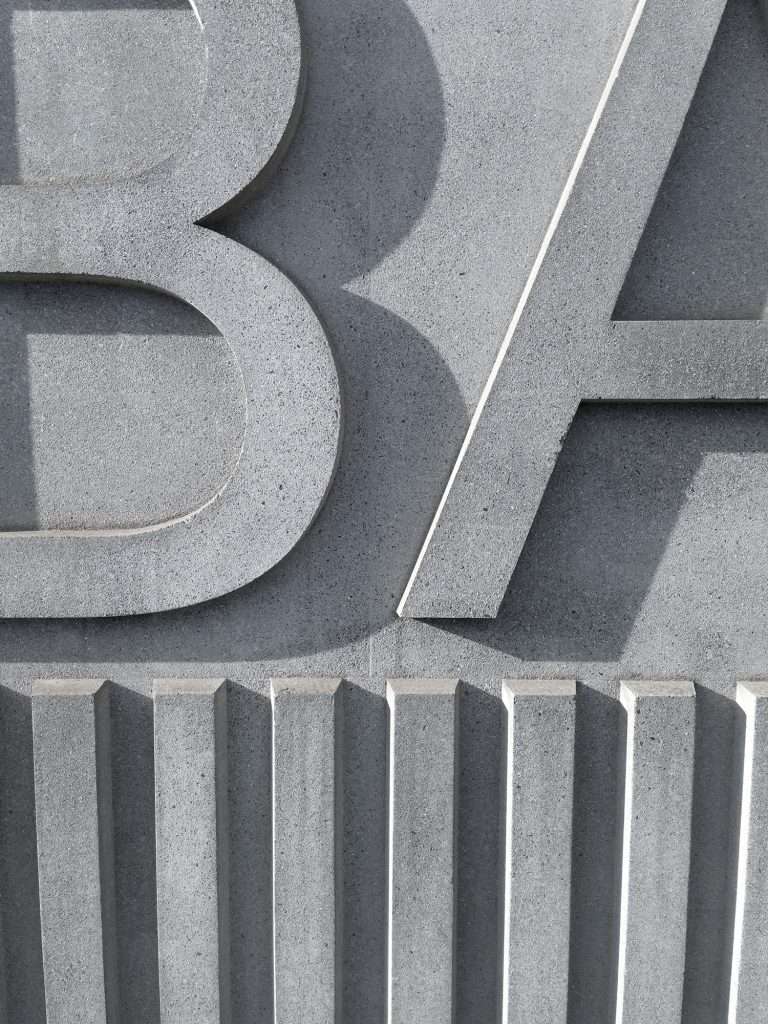
Tuesday, October 22, 2024
Hello readers, thanks for turning your eyeballs this way.
Lately I’ve been feeling the urge to write something a bit more personal. I’m not sure it fits with the “beat” of whatever this substack is, but I’m making some room for it here, because it’s hard to stay professional all the time. Because professionalism is really a kind of self-censorship, and I’m not sure why but I’m a little afraid to step outside of it. But let’s give it a try.
It’s been a fallow couple of weeks for my brain. Chalk it up to early onset Seasonal Depression. Some days I’ve cursed every driver of every car that streams past me down the slushy autumn road, pushing their foot on every pedal that sends yet more gas into the air. Days I’ve felt buried under the rubble of modernism, crushed by the weight of a century of mistakes.
It’s hard to broach the existential dread that comes with knowing and accepting the reality and weight of the climate crisis. Some of us know it, but try not to look straight at it. Others have heard the broad strokes of it, and may worry a little, but decide (perhaps for their own good) not to concern themselves with it, while a small minority choose to flat-out deny that it’s real.
Some of us are staring through our fingers into the abyss, in the morbid hope that it might acknowledge us.
These past few weeks have been a real challenge for the climate news ingester. We’ve seen major oil companies further shred any semblance of a hint of a veil of responsibility, while our government funnels billions towards them under the guise of carbon capture technology that doesn’t work. Clean energy, conservation and rewilding projects that we know are effective languish in the meantime. Now scientists are telling us their own predictions were too conservative, and unpredictable failures in our ecosystem are causing breakdown to accelerate. All the while Hurricanes tear into the south of the US, floods abound everywhere, and fossil-fuelled genocide continues unabated.
How do we not fall into nihilism. How does the world remain so disconnected.
It’s like we are ants, incapable of altering our own patterns. Following pheromone trails, digging holes and chewing out branches. It looks like intelligence—a lot’s happening—but it turns out it’s actually very dumb.
Will we simply consume everything we can until we can’t?
I see a lot of posts about the importance of not giving up, not going to sleep, of connecting with nature and getting back to the core of things. I like how it sounds, but it feels so abstract. What does ‘not giving up’ mean? What, for that matter, would ‘giving up’ mean for someone who’s barely influencing a fight? I’d quite like to go to sleep. Sleeping means we can dream (I think someone famous said that). But this feels more like sitting awake, waiting, bracing for the wave to hit. What else can most of us do? It’s inescapable.
I suppose that’s it. Wait for evolution to rein us in. We’ve finally found the line. Stepped over the boundary. Will she put us in our place?
Some days I perceive the whole concept of ‘climate communication’ as the sound of middle-class wheels spinning in place. Something to occupy the mind and conscience of those of us too comfortable to really get involved in the political reality. But that’s uncharitable. Political reality means conflict, violence too, eventually.
So we’re left to formulate some kind of twisted philosophy in order to live in the world, carry on with life, maintain a belief in the future and still know what we know. Perhaps that’s what is meant by not giving in.
Like I said, a fallow few days for the old noggin, writing from a bleaker state. But I’m feeling a little more positive as I hit ‘post.’ (Is my mood my reality, or does reality create my moods? Both. It’s both.)
From the top of the hill near our flat, you can see all of Glasgow. Some mornings the whole valley is swamped in fog, and it’s hard to make out the faintest shapes of the spires that punctuate the city. Other mornings it’s so bright and clear that you can see all the way to the Trossachs, the first snow glistening from the mountains beyond.
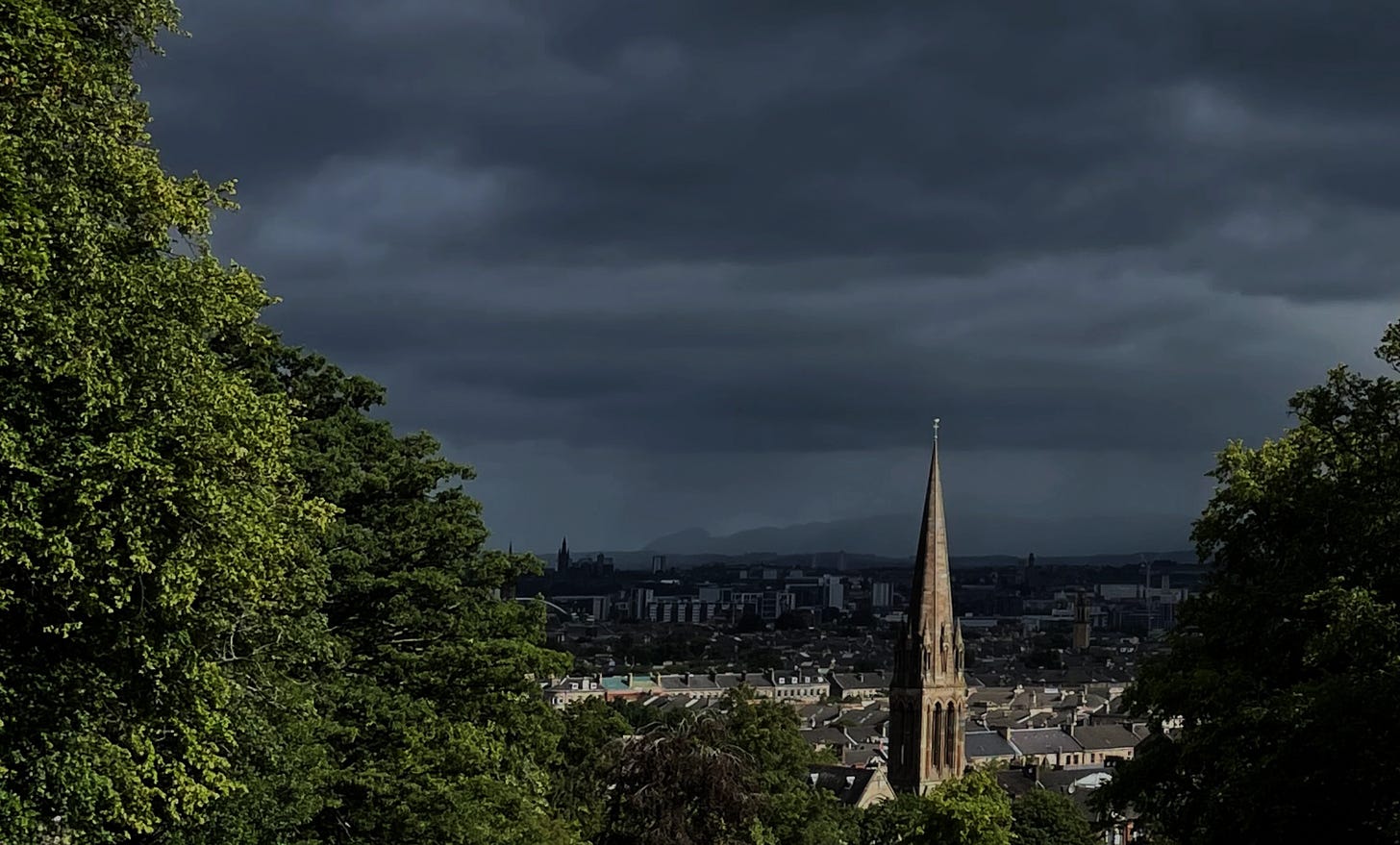
Thanks for reading.
Here’s a song that perfectly encapsulates everything I just wrote. In fact, don’t bother reading my ramblings, just listen to Jeff: